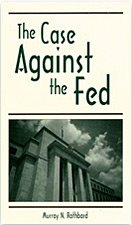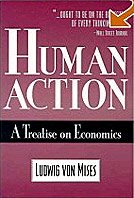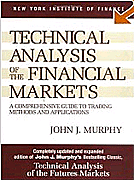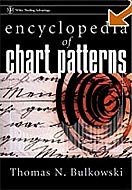John Dizard: Treading the foothills of a gold bull market
By John Dizard
Financial Times, London
Monday, November 5, 2007
With spot gold now hovering around the $800 an ounce price level, you would think the goldbugs would be joined by a frenzied public snorting up of gold shares and Krugerrands. Volatility should be jumping to record levels, and the long-neglected managers of gold unit trusts and mutual funds should be ushered past the velvet ropes and into the VIP rooms.
No.
If you enter "2007 gold bull market" (without the quotation marks) in the English Google search box, the algorithm will report more than 1.9 million entries. That is not, however, the same thing as people buying metal or shares.
John Hathaway, the portfolio manager of the $1.128 billion (L541 million, E778 million) Tocqueville Gold Fund in New York, had a total return of 38.2 per cent from October of 2006 to September of this year. Not bad, but, as he says, "It's all performance, not money flows."
Over that time, new purchases of fund shares were $330 million, while withdrawals were $280 million, for a net inflow of $50 million. If the public had really bought into this bull market story, then we would be looking at something better than annual net inflows of 5-6 per cent.
As a precious metals hedge fund manager points out: "Implied volatility for one month gold is around 20 per cent. Back in the real bull market of 1980, it was up to 50 and 60 per cent. Silver vol was over 100 per cent in 1980. You have this clinical signal that the bull market hasn't started yet."
The relatively subdued interest of the investing public, if not the investment newsletters and columnists, is actually good news for those long the metal. It means there are a lot of people left to buy the stuff, which is not the case at bull market peaks.
In recent weeks, as the gold price has approached the $800 level, the rate of increase in the price, the momentum of buying interest, has slowed, one sign that a correction in the uptrend could be at hand. Even so, the low volatility and low level of public interest both suggest that even with a short or intermediate correction, we are only in the foothills of the gold bull market.
For example, one of the main supports for the gold price in recent years has been the closing out of mining companies' hedge books. Throughout the 1980s and 1990s, the mining companies effectively sold much of their future production using a range of derivatives contracts. This protected their earnings from price declines, at the expense of giving up the cash flow benefits of price increases.
In this decade, under pressure from shareholders who wanted leveraged exposure to gold price increases, the mining companies bought back their hedges. In 2001, the gold miners had hedge books totalling some 3,400 tonnes; now they are down to a total of about 1,000 tonnes. This unwinding was a significant part of the total demand for gold in the past several years.
Interestingly, the quarterly reports just out for AngloGold Ashanti and Barrick showed that they were not big buyers of gold in the past quarter. So some other people were supplying the fuel for the summer and early fall rally. "The quality of demand, not just total demand, rose over the quarter just past," as a longtime gold sceptic told me when the third quarter hedge books were disclosed last Thursday.
All this has been going on as many of the "gold" mutual funds available to the public became "hard asset" funds. In recent years, the price of gold has not risen as much as, say, nickel, copper, or lead. To keep the money coming in, most portfolio managers re-positioned themselves as commodities or metals investors. They may want to consider another makeover.
From mid-August, when the credit squeeze finally became a headline, to the end of October, the spot gold price was up over 19.3 per cent, while the CRB index, a commodities basket, increased by 12.6 per cent. This makes some macro sense, as the demand for commodities such as copper will be reduced by the US housing slump, not to mention substitution effects, while the hesitant Bernanke reflation is helping gold.
However, the reluctance of the big central banks as a group, not just the Fed, to recognise the hole they are in will stretch out the reflationary process. The Fed's statement after the 25 basis point cut last week was far more "balanced" than it probably should be. It is clear that the board will be reacting to weakness, rather than forestalling it. European central bankers are using even more hawkish language. Both the Americans and Europeans will have to see more real-time, real economy effects before they abandon their models and aggressively reflate. They will.
Gold is both a monetary instrument and a commodity, but the size of its above-ground supply makes the monetary element more significant. That means attempts to estimate its future price track by looking at annual mine supply or jewellery demand will be misleading.
As Mr Hathaway says: "Mervyn King's effective guarantee of the liabilities of the British banking system is much more significant than declining South African gold production."
So, even at about $800 an ounce, the real gold bull market has not begun.
* * *
Financial Times, London
Monday, November 5, 2007
With spot gold now hovering around the $800 an ounce price level, you would think the goldbugs would be joined by a frenzied public snorting up of gold shares and Krugerrands. Volatility should be jumping to record levels, and the long-neglected managers of gold unit trusts and mutual funds should be ushered past the velvet ropes and into the VIP rooms.
No.
If you enter "2007 gold bull market" (without the quotation marks) in the English Google search box, the algorithm will report more than 1.9 million entries. That is not, however, the same thing as people buying metal or shares.
John Hathaway, the portfolio manager of the $1.128 billion (L541 million, E778 million) Tocqueville Gold Fund in New York, had a total return of 38.2 per cent from October of 2006 to September of this year. Not bad, but, as he says, "It's all performance, not money flows."
Over that time, new purchases of fund shares were $330 million, while withdrawals were $280 million, for a net inflow of $50 million. If the public had really bought into this bull market story, then we would be looking at something better than annual net inflows of 5-6 per cent.
As a precious metals hedge fund manager points out: "Implied volatility for one month gold is around 20 per cent. Back in the real bull market of 1980, it was up to 50 and 60 per cent. Silver vol was over 100 per cent in 1980. You have this clinical signal that the bull market hasn't started yet."
The relatively subdued interest of the investing public, if not the investment newsletters and columnists, is actually good news for those long the metal. It means there are a lot of people left to buy the stuff, which is not the case at bull market peaks.
In recent weeks, as the gold price has approached the $800 level, the rate of increase in the price, the momentum of buying interest, has slowed, one sign that a correction in the uptrend could be at hand. Even so, the low volatility and low level of public interest both suggest that even with a short or intermediate correction, we are only in the foothills of the gold bull market.
For example, one of the main supports for the gold price in recent years has been the closing out of mining companies' hedge books. Throughout the 1980s and 1990s, the mining companies effectively sold much of their future production using a range of derivatives contracts. This protected their earnings from price declines, at the expense of giving up the cash flow benefits of price increases.
In this decade, under pressure from shareholders who wanted leveraged exposure to gold price increases, the mining companies bought back their hedges. In 2001, the gold miners had hedge books totalling some 3,400 tonnes; now they are down to a total of about 1,000 tonnes. This unwinding was a significant part of the total demand for gold in the past several years.
Interestingly, the quarterly reports just out for AngloGold Ashanti and Barrick showed that they were not big buyers of gold in the past quarter. So some other people were supplying the fuel for the summer and early fall rally. "The quality of demand, not just total demand, rose over the quarter just past," as a longtime gold sceptic told me when the third quarter hedge books were disclosed last Thursday.
All this has been going on as many of the "gold" mutual funds available to the public became "hard asset" funds. In recent years, the price of gold has not risen as much as, say, nickel, copper, or lead. To keep the money coming in, most portfolio managers re-positioned themselves as commodities or metals investors. They may want to consider another makeover.
From mid-August, when the credit squeeze finally became a headline, to the end of October, the spot gold price was up over 19.3 per cent, while the CRB index, a commodities basket, increased by 12.6 per cent. This makes some macro sense, as the demand for commodities such as copper will be reduced by the US housing slump, not to mention substitution effects, while the hesitant Bernanke reflation is helping gold.
However, the reluctance of the big central banks as a group, not just the Fed, to recognise the hole they are in will stretch out the reflationary process. The Fed's statement after the 25 basis point cut last week was far more "balanced" than it probably should be. It is clear that the board will be reacting to weakness, rather than forestalling it. European central bankers are using even more hawkish language. Both the Americans and Europeans will have to see more real-time, real economy effects before they abandon their models and aggressively reflate. They will.
Gold is both a monetary instrument and a commodity, but the size of its above-ground supply makes the monetary element more significant. That means attempts to estimate its future price track by looking at annual mine supply or jewellery demand will be misleading.
As Mr Hathaway says: "Mervyn King's effective guarantee of the liabilities of the British banking system is much more significant than declining South African gold production."
So, even at about $800 an ounce, the real gold bull market has not begun.
* * *
Labels: bull market, gold















![[Most Recent Quotes from www.kitco.com] [Most Recent Quotes from www.kitco.com]](http://www.kitco.com/images/live/t24_au_en_usoz_6.gif)
![[Most Recent Quotes from www.kitco.com] [Most Recent Quotes from www.kitco.com]](http://www.kitco.com/images/live/au_go_0030_ny.gif)
![[Most Recent Quotes from www.kitco.com] [Most Recent Quotes from www.kitco.com]](http://www.kitco.com/images/live/au_go_0365_ny.gif)
![[Most Recent Quotes from www.kitco.com] [Most Recent Quotes from www.kitco.com]](http://kitconet.com/charts/metals/silver/t24_ag_en_usoz_4.gif)

















0 ΣΧΟΛΙΑ (COMMENTS):
Post a Comment
<< Home